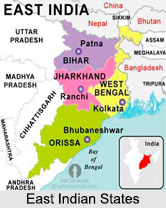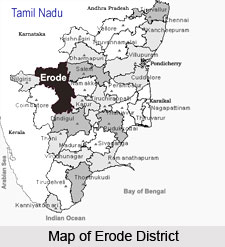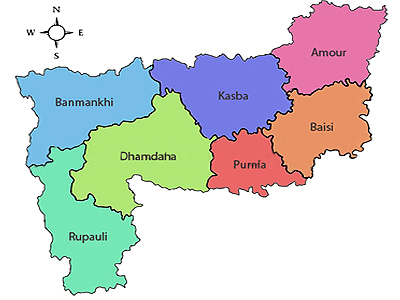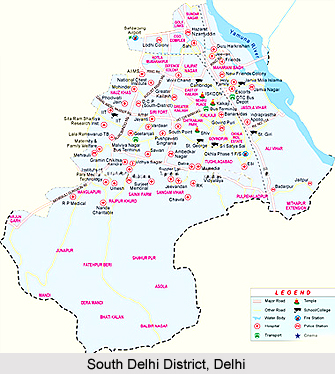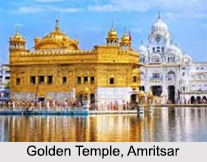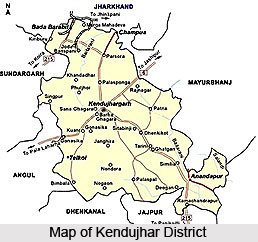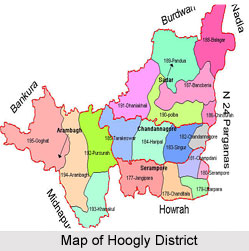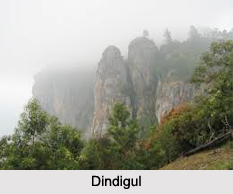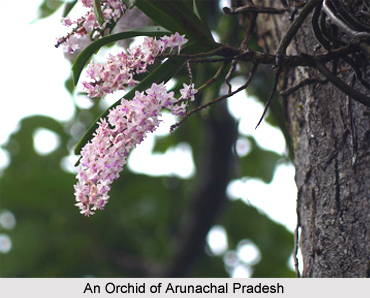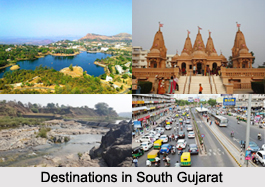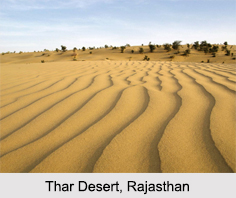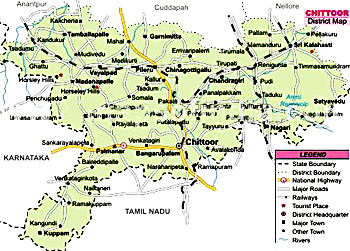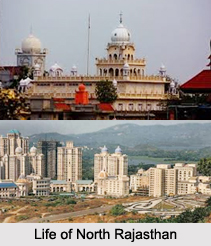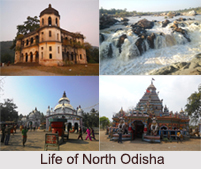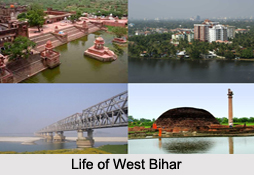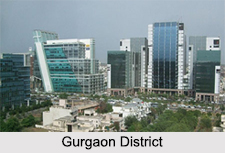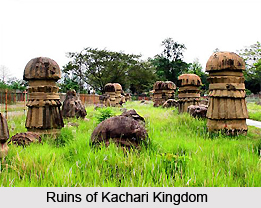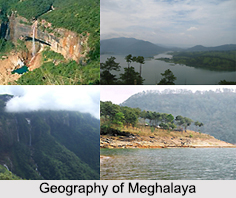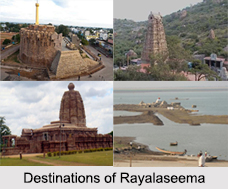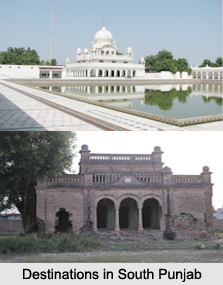About Vellore District
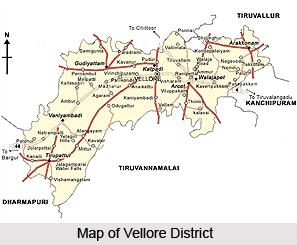 Vellore district has the blend of rich heritage and culture representing the ancient Dravidan civilization. Vellore had the privilege of being the seat of the Pallava, Chola, Nayak, Maratha, Arcot Nawabs and Bijapur Sultan Kindoms. The district of Vellore in the state of Tamil Nadu formed the best and the strongest fortress in the Carnatic War in the seventeenth century. The district also witnessed the massacre of European soldier during the mutiny of 1806. The head quarters of the district of Vellore is Vellore and it is suitably connected by bus and rail routes to major towns of the neighbouring states like Andhra Pradesh, Kerala and Karnataka. The name Vellore is derived from the Tamil words, `Vel` or Spear and `oore` or city. It thus means the `City of Spears`.
Vellore district has the blend of rich heritage and culture representing the ancient Dravidan civilization. Vellore had the privilege of being the seat of the Pallava, Chola, Nayak, Maratha, Arcot Nawabs and Bijapur Sultan Kindoms. The district of Vellore in the state of Tamil Nadu formed the best and the strongest fortress in the Carnatic War in the seventeenth century. The district also witnessed the massacre of European soldier during the mutiny of 1806. The head quarters of the district of Vellore is Vellore and it is suitably connected by bus and rail routes to major towns of the neighbouring states like Andhra Pradesh, Kerala and Karnataka. The name Vellore is derived from the Tamil words, `Vel` or Spear and `oore` or city. It thus means the `City of Spears`.
The district of Vellore lies between twelve degree and fifteen minutes to thirteen degree and fifteen minutes North latitudes and seventy eight degree and twenty minutes and seventy nine degree and fifty minutes East longitudes in the state of Tamil Nadu. The total geographical area of the Vellore district is 5920.18 square kilometers. According to the year 2001 census, the total population of the district is 3477317.
History of Vellore District
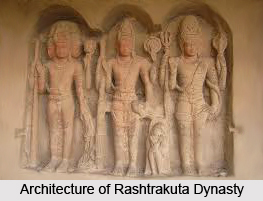 History of Vellore district is interesting and it boasts up its glorious past. The district is strategically located with well-connected bus and rail routes to major towns of the neighbouring states like Karnataka, Andhra Pradesh and Kerala. The district`s history assumes a great significance and relevance, as the glorious past of the place is unfolded. It was under the sway of various dynasties and rulers, the prominent among them being the Pallavas, the Rashtrakuta dynasty of Malkhed, Cholas of Uraiyur, Sambuvarayar, the rulers of Vijayanagarm, Mamathas, the Nawabs of the carnatic and e town through the ages. In the eighteenth century the district of Vellore was the scene of some of the decisive battles fought in Ambur in A.D. 1749, in Arcot in the A.D 1751, and in Vandivasi in the A.D 1760 as a result of the long-drawn struggle between the English and the French for supremacy.
History of Vellore district is interesting and it boasts up its glorious past. The district is strategically located with well-connected bus and rail routes to major towns of the neighbouring states like Karnataka, Andhra Pradesh and Kerala. The district`s history assumes a great significance and relevance, as the glorious past of the place is unfolded. It was under the sway of various dynasties and rulers, the prominent among them being the Pallavas, the Rashtrakuta dynasty of Malkhed, Cholas of Uraiyur, Sambuvarayar, the rulers of Vijayanagarm, Mamathas, the Nawabs of the carnatic and e town through the ages. In the eighteenth century the district of Vellore was the scene of some of the decisive battles fought in Ambur in A.D. 1749, in Arcot in the A.D 1751, and in Vandivasi in the A.D 1760 as a result of the long-drawn struggle between the English and the French for supremacy.
One of the monuments of Vellore is the fort and its actual date of construction could not be established. A very close examination of the stone inscriptions suggests that the fort in all probability might have been erected during the rule of Chinna Bommi Nayak from A.D. 1526 to A.D. 1595. It is one of the most perfect specimens of Military architecture in the southern parts of India. The other note worthy monuments are the Mausoleums located in Aruganthampoodi area on the Vellore-Arcot road, where the family members of Tipu Sultan were buried and the Muthu mandapam on the banks of River Palar, a memorial raised by the Tamil Nadu Government to honor Vikarama Raja Singha, the last Tamil King who ruled Kandy (Sri Lanka) from A.D. 1798 to A.D. 1815. He was imprisoned in Vellore fort for seventeen years.
Role of Vellore in Indian freedom struggle
Vellore District always remained in the fore-front of Indian struggle for independence. In fact, the Sepoy Mutiny of 1806 A.D. which is also known as the Vellore Mutiny of 1806, which broke out inside the Vellore fort against the British authority is considered to be a prelude to the Great Revolt of 1857. It is also described by some historians as the first war of Independence. The spectacular performance of this district in contributing to the military service is commendable, as a large number of men enlisted themselves to the military service, to serve the nation with indomitable sprit and courage. The clock tower in the long Bazaar Vellore was constructed in A.D.1920.
The economic condition of the Vellore district in the earlier stages was not very sound, in the absence of the major industries. But today, there are several industries like Bharat Heavy Electricals Ltd Ranipet, Tamil Nadu Explosives Ltd., Katpadi, etc. There is also a remarkable growth of small scale industries and tanneries in the district. This industrial activity has not only generated employment opportunities, but also contributed to the economic growth of this district. The innovative self help groups of woman are also playing a very useful role in building rural economy and helping rural women to be self reliant in this district of Tamil Nadu. The social scenario of this district has also changed keeping pace with the changing times. Increased social awareness and upward social growth marked the successful story of the district. The bonded labour, the child labour, etc are fast disappearing giving place to new social order. A striking feature of the social change is that the district achieved cent percent literacy.
This district possesses a mixture of great heritage and culture symbolizing the ancient civilization of the Dravidians. Prior to the Dravidians, the Cholas, the Pallavas, the Nayakas and the Marathas ruled Vellore. It once formed the capital of Vijayanagar Empire during 1606 to 1672. In the 17th century, Vellore was depicted as the finest and the strongest fortress in the Carnatic war. In the year 1806, the Vellore Mutiny became one of the earliest revolts against the rule of British in India.
Geography of Vellore District
This district lies between twelve degree and fifteen minutes and thirteen degree and fifteen minutes in the North latitude and seventy eight degree and twenty minutes and seventy nine degree and fifty minutes to the East longitude in the Tamil Nadu state. The total area of the district of Vellore is 5920.18 square kilometers and the total population of this district is 3477317. This district is bordered by the Chittor district of Andhra Pradesh to the north, Tiruvannamalai district to the south, Dharampur district to the west and Tiruvallur and Kanchipuram district to the east. The Palar and Ponnar rivers are the prominent rivers flowing through this district. The climate of this district is always tropical through out the year. Annual rainfall of the district is 9222.4 mm. The maximum temperature of Vellore district is 39.5 degree centigrade and the minimum temperature is 15.6 degree centigrade. The total area under cultivation in this district is 221869 hectares.
Culture of Vellore District<
 The cultural impact in the society of this district is also very significant. Some of the traditional arts of the Vellore district like the Therukoothu, an art form for folk theaters, and Kokkalikottai, a famous traditional dance are gradually vanishing. But it is also a matter of solace to note that some of the handicrafts for which the Vellore district is renowned, are still flourishing. Mats making in Walajapet, silk weaving in Arni and the traditional art of pot making in Vellore and places around it, are some of the handicrafts which are able to successfully withstand the challenges through ages. The Poomalai, scheme that has been introduced by the Government, will not only preserve the traditional handicrafts, but also promote their growth.
The cultural impact in the society of this district is also very significant. Some of the traditional arts of the Vellore district like the Therukoothu, an art form for folk theaters, and Kokkalikottai, a famous traditional dance are gradually vanishing. But it is also a matter of solace to note that some of the handicrafts for which the Vellore district is renowned, are still flourishing. Mats making in Walajapet, silk weaving in Arni and the traditional art of pot making in Vellore and places around it, are some of the handicrafts which are able to successfully withstand the challenges through ages. The Poomalai, scheme that has been introduced by the Government, will not only preserve the traditional handicrafts, but also promote their growth.
Education in Vellore District
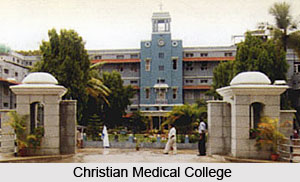 Education in Vellore district is advanced and it is consistently good and commendable. The American Arcot mission, which was established in Vellore center in the year 1853, has the distribution of pioneering the cause of higher education by establishing the American Arcot Mission College affiliated to the University of Madras as early as 1898 and later on, this came to be known as Voorhees College. The Sacred Heart College, Tirupattur and the Auxilium College (for women) at Katpadi are other Christian institutions which are dedicated to the cause of education. The Government of Tamil Nadu with an ambitious scheme and ardent desire to promote higher education established a series of Arts Colleges throughout the state. The Muthurangam Government Arts College, Vellore, Thirumagal mills Government Arts college and Gudiyatham Arigar Anna Arts college for women, Walajah have been established in the rural areas for poor students.
Education in Vellore district is advanced and it is consistently good and commendable. The American Arcot mission, which was established in Vellore center in the year 1853, has the distribution of pioneering the cause of higher education by establishing the American Arcot Mission College affiliated to the University of Madras as early as 1898 and later on, this came to be known as Voorhees College. The Sacred Heart College, Tirupattur and the Auxilium College (for women) at Katpadi are other Christian institutions which are dedicated to the cause of education. The Government of Tamil Nadu with an ambitious scheme and ardent desire to promote higher education established a series of Arts Colleges throughout the state. The Muthurangam Government Arts College, Vellore, Thirumagal mills Government Arts college and Gudiyatham Arigar Anna Arts college for women, Walajah have been established in the rural areas for poor students.
The private participation in the growth of higher education in the Vellore district is also overwhelming. The D.K.M. College for women Vellore is a fine example of private institutions in this district. Some of the Muslim philanthropists and educationists, realizing the need to wide open opportunities for the Muslim youth to learn higher education, have established educational centers. The Islamiah College, Vaniayambadi, C. Abdul Hakeem College, Melvisharam, the Mazhrul-uloom College, Ambur, and the Muslim minority Institutions contribute their mite in promoting higher education in the district of Vellore. The Arabic College in Vellore district is another important educational center for higher education.
The district of Vellore in the state of Tamil Nadu is not lagging behind in providing professional education. The Christian Medical College, Vellore offers even Post Graduate courses in some specialized branches. By starting an Engineering College, the Government also has fulfilled the aspiration of the student community of this district. In view of the financial constraints, in the last few years, the Government has encouraged self financing institutions. The Vellore engineering College, Vellore, which has several academic distinctions to its credit, The Priyadershini engineering college, Vaniyampadi, have come into existence as a result. There is also a Government Teachers Training College, in Vellore offering both Undergraduate and Post Graduate courses. The phenomenal growth of these educational institutions in the district only testifies the growing demand and the keen interest of the student community for higher and professional education.
Some of the other major educational institutions in the district of Vellore are The Schiefflin Leprosy Research and Training Center in Karigiri, Vellore Institute of Technology, Muthurangam Government Art College, Auxillium Women`s College, Auxilium Girls Higher secondary School, Government Muslim Higher secondary school, Ida Scudder School, etc.
Economy of Vellore District
The economic condition of Vellore district in the earlier stages was not very sound, in the absence of the major industries. But with the sustained efforts and vigorous policies of the Government, industries like Tamil Nadu Explosives Ltd. Katpadi, Bharat Heavy Electricals Ltd Ranipet, etc have been established. There is also a fair amount of growth and progress of small scale industries and tanneries in this district. Thus, these industrial activities have not only generated employment opportunities, but also contributed to the overall economic growth of this district. The innovative self help groups of woman in this district are also playing a major role in shaping the rural economy and helping rural women to be self reliant.
Temples of Vellore District
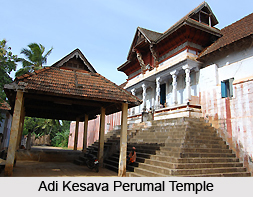 Temples of Vellore district in Tamil Nadu depict the historical aspect of the district and narrates many events of the bygone era. Vellore district in Tamil Nadu is one of historical places of southern India. The literal meaning of Vellore is derived from the Tamil words, Vel (Spear) + oore (city), means `City of Spears`.
Temples of Vellore district in Tamil Nadu depict the historical aspect of the district and narrates many events of the bygone era. Vellore district in Tamil Nadu is one of historical places of southern India. The literal meaning of Vellore is derived from the Tamil words, Vel (Spear) + oore (city), means `City of Spears`.
The important temples of Vellore district are Kshirapthinath Temple, Adi Kesava Perumal Temple, Sri Rama Temple, Margabandhuswami Temple, Sholingur Narasimha Temple, Arulmigu Balamurugan Tirukkovil, Seliamman Temple, Vallimalai Subramanyar Temple, Avaniyapuram Hill Temple, Umapatheeswarar Temple and many more.
Adi Kesava Perumal Temple, one of the temples of Vellore district is dedicated to Lord Vishnu and is located at Thandalam in Vellore District. This temple of Vellore district was built towards the end of the Chola period. The procession idols are that of Sri Adi Kesava Perumal with his consorts, Sridevi and Bhoodevi. Gopuram and vimana are the prime features of this temple. Seliamman Temple, one of the eminent temples of Vellore district is situated at Vellore in Tamil Nadu. This temple is dedicated to goddess Seliamman. According to myths, if an unmarried woman offers her prayers to the goddess, she will be blessed with marriage soon. An annual fair is held in this temple during the months of March-April.
Sri Rama Temple lies at Nedungunam in Vellore District. Lord Ram is the presiding deity, in a sitting position with chin mudra, Sita on his left and Lakshman to his right. He assumes the role of Guru and Lord Hanuman is seated listening to his Lord. Here the Lord is known as Vijaya Raghavan, signifying his victory over Ravana. The temple boasts a five-tier Rajagopuram. There are the idols of Lord Garuda and Dwarapalakas (gate-keepers) inside the temple. Moreover, there are shrines for Azhwar, Lord Krishna and Lord Venkateswara. One can also see two idols of Anjaneya. Sudharsana has a separate shrine with Yoga Narasimhar.
Jalakanteswara Temple, dedicated to Lord Shiva, is one of the well-known temples of Vellore district, inside the Vijayanagar Fort. This temple dates back to about 1550 AD and has various architectural monuments of the Vijayanagar kingdom. Among them are the sculptures of Yali and other legendary figures inside the pillared mandapam. An image of Lord Ganesh is kept at the entrance of the mandapam. Vellamalai Temple is dedicated to Subramanya. Situated on the top of a hill, this temple of Vellore district is carved from a massive stone. Here devotees tie cloth onto trees for gratifying their wishes. Kshirapthinath Temple, one of the famous temples of Vellore district is located at Tiruparkadal and is dedicated to Lord Vishnu, the Lord of the Milky Ocean. There is a separate worship place for Goddess Kadalmagar Nachiyar. The temple teertham is Amruda Teertham.
Balamurugan Temple
Balamurugan temple is situated in Rathinagiri located very near to the city of Vellore, over a hillock. This ancient temple was built in 14th century. About 130 steps take to the temple. A few decades back, the structure of the temple deteriorated badly which was then restored by Sri Swami Balamugan Adimai with reconstruction and sculptural works. The temple is also known as the 7th Padai Veedu of Lord Muruga.
Sri Kangeeswarar Temple
Sri Kangeeswarar temple was established during the rule of Chola dynasty as per the stone inscriptions on the temple. It stands at Kangeyanallur near the main city of Vellore. This 500 years old temple is dedicated to Lord Muruga. It was renovated by Sri Thirumuruga Kirupanandha Varriyar, a famed exponent of Hindu scriptures, and Sri Mallaiyadhas Bhagavadhar. The temple is adorned with artistic sculptures illustrating the six sthalams of Lord Muruga and the Kandhapuranam. Local myths say that Lord Muruga was worshipped by celestial Gods and sages at everyday at mid nights.
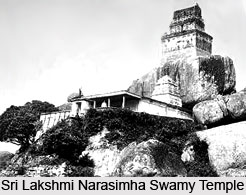
Sri Selva Vinayagar Temple
The temple stands at a distance of 3 kilometres from Vellore city at Shenbakkam. The temple is dedicated to Somasundareswarar and Sri Selva Vinayagar. The most fascinating feature of the temple is that the worship of the deity is performed in an open space. The main shrine is devoid of any roof so that all the celestial gods and sages can worship the deity.
Sri Lakshmi Narasimha Swamy Temple
It is another famous and ancient shrine dedicated to Lord Lakshmi Narasimha located near Vellore city at Singiri Koil. The temple is believed to have built in 10th century by Rajavarman, the local chieftain, after Lord Narasimha ordered him in his dreams. A small hillock houses this beautiful temple. In the main sanctum, a six feet tall idol of the lord is enshrined in seating posture.
Uthira Ranganathar Temple
It is located on the banks of Palar River. This 5th century temple was constructed by Vijayanagar kings. Lord Ranganathar is the presiding deity of the temple and his idol was believed to have excavated from the banks of the river. The temple also houses other deities like Lord Rama and Garuda, which were installed by the kings who ruled over the region.
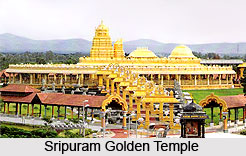
Subramanyar Temple
This temple is situated near the Vellore city on the slopes of Javvadhu hills along the bank of River Palar in a place called Vallimalai. In the month of February the annual Brahmotsavam is organized in the temple every year. The temple is associated with several legends.
Sri Margapandeswarar Temple
It is a 1300 years old temple and is the biggest in the district of Vellore. The principle deities of the temple are Lord Vishnu, Lord Brahma, Gowri Devi and Lord Sriharan. It is known for its beautiful sculptures.
Sripuram Golden Temple
A Mahalakshmi temple also known as `Sripuram` is one of the most gorgeous temples of Vellore. It is constructed by more than a tonne of pure gold which glitter under the sun brilliantly. The temple attracts numerous devotees from far off places and is the only one in the world covered completely with gold. The base of the temple is made of copper on which beautiful engravings have been made. Over this base gold covering has been made by beating the gold into nine layers of foils. The image of the deity is made of stone granite and is covered with gold.
Monuments Of Vellore
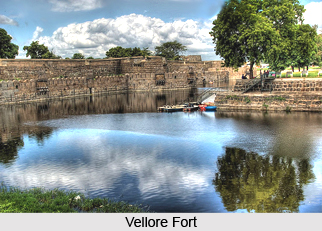 The monuments of Vellore are resplendent in their historical legacy. They are an exhibition of the life and times of the various dynasties and rulers that they have been constructed by-from the Pallavas, the Cholas, the Rashtrakutas, Nayakas and right up to the Bijapur Sultanate the Nawabs of the Carnatic and the British. These dynasties are well-known as patrons of art and architecture, and the monuments found here speak volumes of their artistic prowess.
The monuments of Vellore are resplendent in their historical legacy. They are an exhibition of the life and times of the various dynasties and rulers that they have been constructed by-from the Pallavas, the Cholas, the Rashtrakutas, Nayakas and right up to the Bijapur Sultanate the Nawabs of the Carnatic and the British. These dynasties are well-known as patrons of art and architecture, and the monuments found here speak volumes of their artistic prowess.
Vellore is situated 80 miles west of Tamil Nadu and is the headquarters of the Vellore district. The name Vellore which means city of spears itself suggests that this city was a battle field and has witnessed many wars. It also signifies that Vellore has seen many rulers come and go. The town is a typical rural centre, with chaotic bazaars and colourful street markets.
The main attractions of the town are the Jvarakandeshvara temple and the Vijayanagara fort, apart from some other temples.
Historical Monuments in Vellore
The Vellore fort was built in the 13th century and was considered to be the most infallible fort in India. It had a very important role to play in the Carnatic war fought in the 17th century and was the site of the Sepoy mutiny of 1806 which many consider the prelude to the Sepoy mutiny, 1857.
Though there is no way of ascertaining the exact date of the construction or the ruler under whom it was established, it is believed that in all probability it was made by Chinna Bommi Nayak sometime between 1274 and 1283. The fort is one of the finest examples of military construction in India. It has been constructed entirely using large blocks of granite. Surrounded by a moat, the main rampart has circular bastions and square towers at intervals to provide clear fields of fire. The outer wall, which is lower than the inner, to which it is joined, provides a curtain of enormous thickness. The crenellated parapets have wide merlons for musket fire. On the south face the moat is crossed by a stone causeway which leads to a sally-port. Within the fort the parade ground is flanked by great mahals, two-storey houses with large internal courtyards.
The fort has witnessed a long history with its ownership passing from the Nayaks, to the Bijapur Sultans, to Marathas, to the Carnatic Nawabs and finally to the British, who held the fort until India gained independence. In 1676 the Marathas under Takaji Rao captured Vellore after a four and a half months` siege. In 1708 Daud Khan from Delhi in turn ousted the Marathas. It became the headquarters of Mortaza Ali, brother-in-law of the claimant to the Arcot throne, and in the 1740s it was renowned as the strongest fortress in the Carnatic. In 1780 an English garrison held out against Hyder Ali for over two years. After the fall of Seringapatam in 1799 Tipu`s family were detained here. The subsequent mutiny at Vellore in 1806 has been attributed to their intrigues, but it was more probably due to the orders of Sir John Cradock prohibiting the wearing of caste marks and beards. The first rebellion against British rule erupted at this fort in 1806, and it is also a witness to the tragic massacre of the Vijayanagara royal family of Emperor Sriranga Raya.
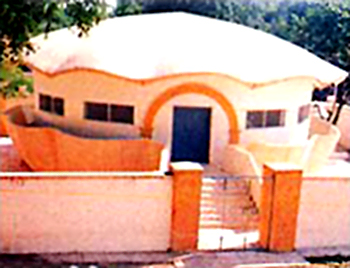 To the right of the entrance to the fort is a small enclosure, the Old Cemetery. There is a low sarcophagus (1863-4) here, inscribed to the memory of the officers and men who were killed in the 1806 mutiny. There is a modern church nearby.
To the right of the entrance to the fort is a small enclosure, the Old Cemetery. There is a low sarcophagus (1863-4) here, inscribed to the memory of the officers and men who were killed in the 1806 mutiny. There is a modern church nearby.
The Muthu Mandapam or pearl palace is a rock memorial. It has been constructed around the tombstone of Vikramraja Singh the last Tamil ruler of Kandy (now in Sri Lanka) from 1798 to 1815 A.D.He was imprisoned in the Vellore fort for seventeen years. It is near the banks of the river Palar, located a kilometre off town.
The Government museum is a multi purpose museum-cum-archive maintained by the Department of Museum Government of Tamil Nadu. It contains historical monuments of the erstwhile North Arcot which have been depicted through beautiful frescoes. It exhibits ancient and present day curios relating to Anthropology, Geology and Numismatics.
Religious Monuments in Vellore
Jvarakandeshvara Temple is a beautiful example of Vijayanagara architecture, with fine stone carvings. The temple is renowned for its sculptures and a standing testimony to the excellent craftsmanship of the period. The temple is built within the fort complex and has beautiful carvings of Nandi adorning the walls. The gateway has a seven-storey gopura on blue granite with rich ornamental carvings. There is a huge wedding hall or `kalyanamandap` within the temple just to the left of the entrance. It has some exquisite carvings on it and is adorned with monolithic sculptures. For a long time, the temple was used as an arsenal and remained without a principal deity. Only recently it was sanctified with a statue of Lord Shiva.
The Mausoleums in Aruganthampoodi area on the Vellore - Arcot road are also of great significance. About 1-2 km to the east of the fort arc the tombs of the family of Tipu Sultan, situated in a walled enclosure. To the right on entering is the tomb of Padshah Begum, Tipu`s wife, who died in 1834. Next is Aftab Khan`s tomb, beyond which is a large tank and two plain tombs of women attendants. The large granite pavilion contains the tomb of Mirza Raza, who married one of Tipu`s daughters. At the end is a 6 m {20 ft) high mausoleum with a lofty dome to Bakshi Begum, widow of Hyder Ali, who died in 1806. To the left is a plain mosque.
Tourism in Vellore District
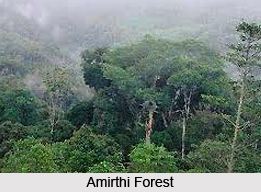 Tourism in Vellore district offers a wonderful opportunity to enjoy the beautiful natural scenery along with some of the historical monuments which speaks of the glorious past of this district. The temples in this district also attract people from different parts of the state. The temples in this district are adorned with the Kalayana Mandapam. The Kalayana Mandapam is a grand piece of stone architecture in Vellore which is regarded as the most beautiful structure of its kind in South India. One of the temples in this district is the Ratnagiri temple which is located at a distance of twelve kilometers to the east of Vellore. There are also several places of tractions in this district which entertains people throughout the year.
Tourism in Vellore district offers a wonderful opportunity to enjoy the beautiful natural scenery along with some of the historical monuments which speaks of the glorious past of this district. The temples in this district also attract people from different parts of the state. The temples in this district are adorned with the Kalayana Mandapam. The Kalayana Mandapam is a grand piece of stone architecture in Vellore which is regarded as the most beautiful structure of its kind in South India. One of the temples in this district is the Ratnagiri temple which is located at a distance of twelve kilometers to the east of Vellore. There are also several places of tractions in this district which entertains people throughout the year.
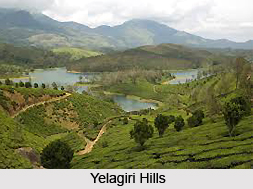 Amirthi forest located twenty five kilometres from Vellore and convenient place for excursion. There is a stream which runs through the semi-dense forest and a zoo with quite a few animals is also there. Those taking interest in trekking, can enjoy a fantastic path to trek up the stream, at the end of which is a small waterfall.
The most favourable time to visit Amirthi is soon after some rain or after the monsoon; either from June to August or from September to November. Another attraction of this district in Tamil Nadu is the splendid Jalagamparai Waterfalls which is formed by the River Attaaru, which runs through the valleys of Yelagiri Hills. It is a suitable picnic spot and also a good destination for day long trek.
Amirthi forest located twenty five kilometres from Vellore and convenient place for excursion. There is a stream which runs through the semi-dense forest and a zoo with quite a few animals is also there. Those taking interest in trekking, can enjoy a fantastic path to trek up the stream, at the end of which is a small waterfall.
The most favourable time to visit Amirthi is soon after some rain or after the monsoon; either from June to August or from September to November. Another attraction of this district in Tamil Nadu is the splendid Jalagamparai Waterfalls which is formed by the River Attaaru, which runs through the valleys of Yelagiri Hills. It is a suitable picnic spot and also a good destination for day long trek.
The Elagiri Hills in the Tirupathur taluk is seventy five kilometres from Vellore which is famously called as the Ooty of Vellore district. It stands eloquent amidst four mountains, at a height of three thousand and five hundred feet above sea level. This place is abundant with natural scenic beauty like lakes, lush green forest, etc. A number of other attractive places in this district are Sericulture Farm, Poly Garden House, Jalagamparai Water Falls, Nachiamman Koil, Mangalam Fishing Pond, Murugan Koil and Valley View point, Thayalur Horiculture Farm, Telescope House, etc.
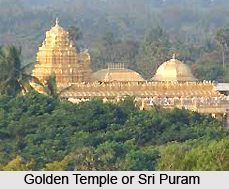 The Golden Temple or Sri Puram is a Spiritual park located at the foot of a small range of green hills in a place known as Malaikodi in the district of Vellore in Tamil Nadu. The important feature of Sri Puram is the Lakshmi Narayani temple or Mahalakshmi temple whose Vimanam and Ardha Mandapam are coated with gold both in the interior and exterior. The temple is situated over a twenty acre land and has been constructed by Vellore-based Sri Narayani Peedam, headed by spiritual leader Sri Sakthi Amma. Another attraction of this district is the Mordhana Dam. It is a picnic spot, where the dam is constructed between two hills. A number of other places of interest in this district are Palar Anaicut Dam, Tippu Mahal, Government Museum, Jalakanteswara Temple, India gate, St. Johns church, Madarasaye Mohammediya Masjid, Clock Tower, Victoria Jubilee Tower, Poomalai Vaniga Vazhagam, Central Jail, etc.
The Golden Temple or Sri Puram is a Spiritual park located at the foot of a small range of green hills in a place known as Malaikodi in the district of Vellore in Tamil Nadu. The important feature of Sri Puram is the Lakshmi Narayani temple or Mahalakshmi temple whose Vimanam and Ardha Mandapam are coated with gold both in the interior and exterior. The temple is situated over a twenty acre land and has been constructed by Vellore-based Sri Narayani Peedam, headed by spiritual leader Sri Sakthi Amma. Another attraction of this district is the Mordhana Dam. It is a picnic spot, where the dam is constructed between two hills. A number of other places of interest in this district are Palar Anaicut Dam, Tippu Mahal, Government Museum, Jalakanteswara Temple, India gate, St. Johns church, Madarasaye Mohammediya Masjid, Clock Tower, Victoria Jubilee Tower, Poomalai Vaniga Vazhagam, Central Jail, etc.
Department of Anatomy Museum at Vellore
The Department of Anatomy Museum at Vellore in the state of Tamil Nadu was established in the year 1942. It is an educational type of museum exactly located near the Christian Medical College, Thorapadi.
The objects that have been displayed in this museum are skeletons, models and bones.
People who are interested to know about anatomy may visit the place on all weekdays.
